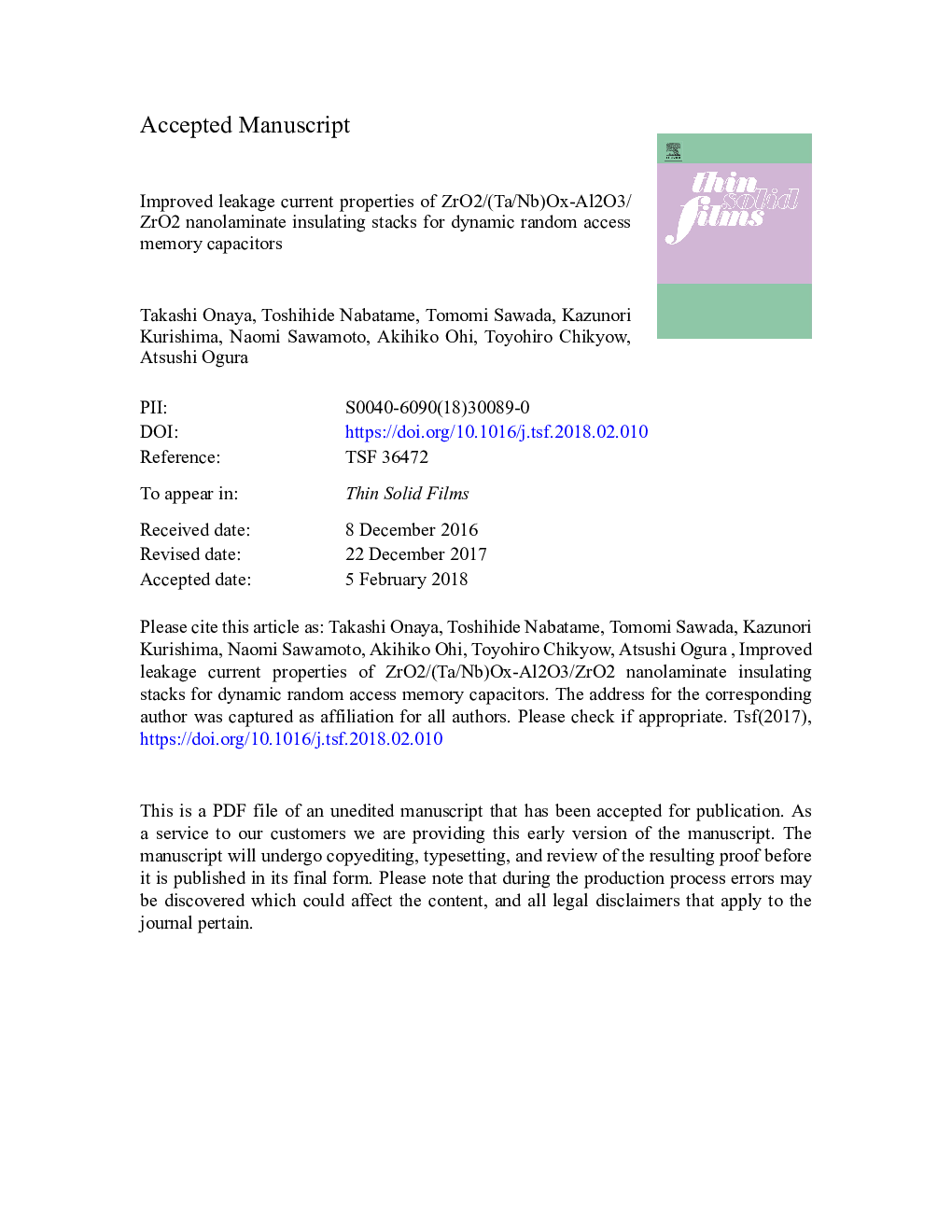| Article ID | Journal | Published Year | Pages | File Type |
|---|---|---|---|---|
| 8032659 | Thin Solid Films | 2018 | 33 Pages |
Abstract
The influence of amorphous high-k interlayers, such as Al2O3, (Ta/Nb)Ox (TN), and (Ta/Nb)Ox-Al2O3 (TNA), on the leakage current (J) and dielectric constant (k) for metal-insulator-metal capacitors with ZrO2/high-k/ZrO2 nanolaminate insulating films and TiN electrodes was investigated. The insulating films were prepared by atomic layer deposition followed by post-deposition annealing at 600â¯Â°C. The capacitance equivalent thickness (CET) of the capacitors increased in the order ZrO2/(Ta/Nb)Ox/ZrO2 (ZTNZ)â¯<â¯ZrO2/(Ta/Nb)Ox-Al2O3/ZrO2 (ZTNAZ)â¯<â¯ZrO2/Al2O3/ZrO2 (ZAZ), owing to the k values for Al2O3 (~6), TNA (~9), and TN (~11). The J values at 0.6â¯V for capacitors with a CET of 1.1â¯nm increased in the order ZTNAZâ¯<â¯ZAZâ¯âªâ¯ZTNZ. The effect of a high-k interlayer on the J characteristics appeared above a thickness of 0.4â¯nm in the case of Al2O3 and TNA, while a 0.8-nm-thick TN maintained high J values. Based on these results, there are three important factors as a high-k interlayer to reduce J value, such as a band gap larger than that for TN (4.4â¯eV), a thickness of â¥0.4â¯nm, and an amorphous structure. Therefore, to achieve the low J and CET, TNA is a promising candidate material for a high-k interlayer for future dynamic random access memory.
Related Topics
Physical Sciences and Engineering
Materials Science
Nanotechnology
Authors
Takashi Onaya, Toshihide Nabatame, Tomomi Sawada, Kazunori Kurishima, Naomi Sawamoto, Akihiko Ohi, Toyohiro Chikyow, Atsushi Ogura,
